Literature Review: Adaptive Planning Practices
Abstract
:1. Introduction
2. Methodology
3. Adaptive Planning Pathway—An Emerging Concept
It is a bad plan that cannot be changed—Publilius Syrus (c. 43 BC)
- An analytical framework proposed to map three-dimensional politics around reflexive governance at the micro-, meso-, and macro-planning levels [41];
- Six practice-based adaptive planning approaches: (i) requirement-based planning, (ii) cost–benefit-based planning, (iii) multi-objective planning, (iv) conflict resolution planning, (v) market-based planning, and (vi) muddling through [31];
- The perspectives of (i) researchers and (ii) planning practitioners who influence the interpretations of scenario analysis as a tool [42];
- Two scenario planning approaches: (i) exploratory scenarios—extrapolating projective and prospective future trends and (ii) the anticipatory scenario—is a policy response that is based on experts’ judgement and stakeholder-defined [43].
4. Adaptive Planning Processes—Benefits and Challenges
4.1. Dynamic Adaptive Policy Planning
- Less intense stakeholder engagement;
- A reduced number of external influences;
- Limited feedback about alternatives;
- Limited uncertainties and related risk management;
- A reduced need to adapt.
4.2. Mobius Loop or Infinity Loop
5. Adaptive Planning Process—Dealing with Uncertainties
6. Discussion and Conclusions
- (1)
- The DAPP concept;
- (2)
- The panarchy model or Mobius loop concept:
- (3)
- The DAPP concept was found to be the most widely used framework for designing adaptive plans. Lawrence (2017) [59] identified four main intervention methods for incorporating adaptiveness at the implementation stage and three catalysts for the uptake of the DAPP. However, the implementation experience or the levels of success of the DAPP are not known in the peer-reviewed literature.
- (4)
- The panarchy model represented by the Mobius loop or infinity loop was the only model illustrated as a scalable model, connecting the past to the future.
- (a)
- The ‘Panarchy model’ was developed by Gunderson (2002) [64] to identify the patterns of change in the ecosystem and eco-social systems.
- (b)
- Natural Foresight builds upon this basic concept of panarchy developed by Gunderson (2002) [64] to integrate adaptability in the action plans using a Mobius loop approach through four main steps: explore, discover, create, and map, in order to drive the implementation of the adaptive planning concept not just at a local level but also in temporal and spatial dimensions to assist in progressive adaptation.
- (c)
- Iii (2009) [72] re-interprets the panarchy model developed by Gunderson (2002) [70] and provides us with the social structure and social capitalism perspective. Räsänen (2021) [71] then builds upon the adaptive planning cycles (Figure 3) developed by Iii (2009) [72] and charts them as a multi-loop structure. The social capitalism perspective is used to organise priorities and social structure to diffuse knowledge, ultimately assisting the move from dynamic to stable conditions [72]. The four steps of panarchy are adapted to the terminology of the social structures as polarised, institutionalised, scattered, and mobilised.
Funding
Data Availability Statement
Acknowledgments
Conflicts of Interest
References
- Fu, Z.H.; Zhao, H.J.; Wang, H.; Lu, W.T.; Wang, J.; Guo, H.C. Integrated planning for regional development planning and water resources management under uncertainty: A case study of Xining, China. J. Hydrol. 2017, 554, 623–634. [Google Scholar] [CrossRef]
- Brinckmann, J.; Kim, S.M. Why We Plan: The Impact of Nascent Entrepreneurs’ Cognitive Characteristics and Human Capital on Business Planning. Strat. Entrep. J. 2015, 9, 153–166. [Google Scholar] [CrossRef]
- Schoemaker, P.J.H. Advanced Introduction to Scenario Planning; Edward Elgar Publishing Limited: Cheltenham, UK, 2022. [Google Scholar]
- Shirmohammadi, B.; Malekian, A.; Salajegheh, A.; Taheri, B.; Azarnivand, H.; Malek, Z.; Verburg, P.H. Scenario analysis for integrated water resources management under future land use change in the Urmia Lake region, Iran. Land Use Policy 2020, 90, 104299. [Google Scholar] [CrossRef]
- Marchau, V.A.W.J.; Walker, W.E.; Bloemen, P.J.T.M.; Popper, S.W. Decision Making under Deep Uncertainty: From Theory to Practice; Springer: Cham, Switzerland, 2019. [Google Scholar]
- Pilz, M.; Kunzmann, K.; Herrmann, C.; Rauch, G.; Kieser, M. Optimal planning of adaptive two-stage designs. Stat. Med. 2021, 40, 3196–3213. [Google Scholar] [CrossRef]
- Plummer, R. Can Adaptive Comanagement Help to Address the Challenges of Climate Change Adaptation? Ecol. Soc. 2013, 18, 782–792. [Google Scholar] [CrossRef]
- Kato, S.; Ahern, J. ‘Learning by doing’: Adaptive planning as a strategy to address uncertainty in planning. J. Environ. Plan. Manag. 2008, 51, 543–559. [Google Scholar] [CrossRef]
- Phadnis, S.S.; Sheffi, Y.; Caplice, C.G. Strategic Planning for Dynamic Supply Chains: Preparing for Uncertainty Using Scenarios; Springer: Cham, Switzerland, 2022. [Google Scholar]
- Scott, C.A.; Bailey, C.J.; Marra, R.P.; Woods, G.J.; Ormerod, K.J.; Lansey, K. Scenario Planning to Address Critical Uncertainties for Robust and Resilient Water–Wastewater Infrastructures under Conditions of Water Scarcity and Rapid Development. Water 2012, 4, 848–868. [Google Scholar] [CrossRef]
- Water Utility Pathways in a Circular Economy; IWA: Nuremberg, Germany, 2016.
- Jazbec, M.; Mukheibir, P.; Turner, A. Transitioning the Water Industry with the Circular Economy FINAL 12102020; Water Services Association of Australia, Institute of Sustainable Futures, University of Technology Sydney: Sydney, Australia, 2020. [Google Scholar]
- Zhabitskii, M.G.; Andryenko, A.Y.; Malyshev, V.N.; Chuykova, S.V.; Zhosanov, A.A. Digital transformation model based on the digital twin concept for intensive aquaculture production using closed water circulation technology. IOP Conf. Ser. Earth Environ. Sci. 2021, 723, 032064. [Google Scholar] [CrossRef]
- Perreault, T. What kind of governance for what kind of equity? Towards a theorization of justice in water governance. Water Int. 2014, 39, 233–245. [Google Scholar] [CrossRef]
- Ward, F.A.; Pulido-Velázquez, M. Efficiency, equity, and sustainability in a water quantity–quality optimization model in the Rio Grande basin. Ecol. Econ. 2008, 66, 23–37. [Google Scholar] [CrossRef]
- Erfani, T.; Pachos, K.; Harou, J.J. Real-Options Water Supply Planning: Multistage Scenario Trees for Adaptive and Flexible Capacity Expansion Under Probabilistic Climate Change Uncertainty. Water Resour. Res. 2018, 54, 5069–5087. [Google Scholar] [CrossRef]
- Haasnoot, M.; Kwakkel, J.H.; Walker, W.E.; ter Maat, J. Dynamic adaptive policy pathways: A method for crafting robust decisions for a deeply uncertain world. Glob. Environ. Chang. 2013, 23, 485–498. [Google Scholar] [CrossRef]
- Kanpurwala, T. Drivers and Challenges of Implementing Integrated Water-Cycle Management Strategy in Regional NSW. Ph.D. Thesis, Macquarie University, Macquarie Park, Australia, 2020. [Google Scholar] [CrossRef]
- Rangwala, T.; Mukheibir, P.; Fane, S. A Review and Comparative Analysis of IWCM Concepts in Australia and Similar Jurisdictions. Water 2023, 15, 1369. [Google Scholar] [CrossRef]
- Cooper, W.W.; Eastman, C.; Johnson, N.; Kortanek, K. Systems approaches to urban planning: Mixed, conditional, adaptive and other alternatives. Policy Sci. 1971, 2, 397–405. [Google Scholar] [CrossRef]
- Bellaschi, J.J. The Design and Simulation of Selected Aspects of an Adaptive Planning Andcontrol System Incorporating Managerial Decision Rules; ProQuest Dissertations Publishing: Ann Arbor, MI, USA, 1972. [Google Scholar]
- Blevins; Ramamoorthy. Aspects of a Dynamically Adaptive Operating System. IEEE Trans. Comput. 1972, 100, 713–725. [Google Scholar] [CrossRef]
- Mylander, W.C., III; Pearson, J.D. CHAMP: A Chance Constrained Adaptive Planning Model; Technical Information Center: Fort Belvoir, VA, USA, 1973. [Google Scholar]
- Werners, S.E.; Wise, R.M.; Butler, J.R.A.; Totin, E.; Vincent, K. Adaptation pathways: A review of approaches and a learning framework. Environ. Sci. Policy 2021, 116, 266–275. [Google Scholar] [CrossRef]
- NOBL. An Adaptive Approach to the Strategic Planning Process. 2023. Available online: https://academy.nobl.io/an-adaptive-approach-to-the-strategic-planning-process/ (accessed on 13 May 2024).
- Williams, B.K. Adaptive management of natural resources—Framework and issues. J. Environ. Manag. 2011, 92, 1346–1353. [Google Scholar] [CrossRef] [PubMed]
- Atwater, R.; Atwater, P.; Atwater, D.; Cruz, J. Adaptation, Integration, and Connection—How Water Utilities Can Plan for Uncertainty. J. Am. Water Works Assoc. 2015, 107, 26–34. [Google Scholar] [CrossRef]
- Mukheibir, P. Small Towns Water Access and Climate Change—Towards Sustainable Access to Urban Water Services under Projected Climate Change Impacts; Lambert Academic Publishing: Saarbrucken, Germany, 2007. [Google Scholar]
- IPCC. Climate Change 2014: Synthesis Report; Contribution of Working Groups I, II and III to the Fifth Assessment Report of the Intergovernmental Panel on Climate Change; Core Writing Team, Pachauri, R.K., Meyer, L.A., Eds.; IPCC: Geneva, Switzerland, 2014; p. 151. [Google Scholar]
- Greig, L.A.; Marmorek, D.R.; Murray, C.; Robinson, D.C.E. Insight into Enabling Adaptive Management. Ecol. Soc. 2013, 18. [Google Scholar] [CrossRef]
- Lund, J.R. Approaches to Planning Water Resources. J. Water Resour. Plan. Manag. 2021, 147, 04021058. [Google Scholar] [CrossRef]
- Pellegrino, R.; Costantino, N.; Giustolisi, O. Flexible investment planning for water distribution networks. J. Hydroinform. 2018, 20, 18–33. [Google Scholar] [CrossRef]
- Walters, C. Challenges in adaptive management of riparian and coastal ecosystems. Ecol. Soc. 1997, 1. [Google Scholar] [CrossRef]
- Nadin, V.; Stead, D.; Dąbrowski, M.; Fernandez-Maldonado, A.M. Integrated, adaptive and participatory spatial planning: Trends across Europe. Reg. Stud. 2021, 55, 791–803. [Google Scholar] [CrossRef]
- Fletcher, S.; Strzepek, K.; Alsaati, A.; de Weck, O. Learning and flexibility for water supply infrastructure planning under groundwater resource uncertainty. Environ. Res. Lett. 2019, 14, 114022. [Google Scholar] [CrossRef]
- Hudson, W.R.; Uddin, W.; Haas, R.C.G. Public Infrastructure Asset Management, 2nd ed.; McGraw-Hill Education: New York, NY, USA, 2013. [Google Scholar]
- Lim, S.-R.; Suh, S.; Kim, J.-H.; Park, H.S. Urban water infrastructure optimization to reduce environmental impacts and costs. J. Environ. Manag. 2010, 91, 630–637. [Google Scholar] [CrossRef]
- NSW Auditor General’s Report. Support for Regional Town Water Infrastructure; Performance Audit Report; Audit Office of New South Wales: Sydney, Australia, 2020.
- Huskova, I.; Matrosov, E.S.; Harou, J.J.; Kasprzyk, J.R.; Lambert, C. Screening robust water infrastructure investments and their trade-offs under global change: A London example. Glob. Environ. Chang. 2016, 41, 216–227. [Google Scholar] [CrossRef]
- Gurung, Y.; Zhao, J.; Kc, B.K.; Wu, X.; Suwal, B.; Whittington, D. The costs of delay in infrastructure investments: A comparison of 2001 and 2014 household water supply coping costs in the Kathmandu Valley, Nepal. Water Resour. Res. 2017, 53, 7078–7102. [Google Scholar] [CrossRef]
- Voss, J.-P.; Bornemann, B. The Politics of Reflexive Governance—Challenges for Designing Adaptive Management and Transition Management. Ecol. Soc. 2011, 16, 1–23. [Google Scholar] [CrossRef]
- Alcamo, J. The Practice of Environmental Scenario Analysis. In Environmental Futures; Elsevier: Amsterdam, The Netherlands, 1998. [Google Scholar]
- Mahmoud, M.; Liu, Y.; Hartmann, H.; Stewart, S.; Wagener, T.; Semmens, D.; Stewart, R.; Gupta, H.; Dominguez, D.; Dominguez, F.; et al. A formal framework for scenario development in support of environmental decision-making. Environ. Model. Softw. 2009, 24, 798–808. [Google Scholar] [CrossRef]
- Berner, C.L.; Flage, R. Creating risk management strategies based on uncertain assumptions and aspects from assumption-based planning. Reliab. Eng. Syst. Saf. 2017, 167, 10–19. [Google Scholar] [CrossRef]
- Hui, R.; Herman, J.; Lund, J.; Madani, K. Adaptive water infrastructure planning for nonstationary hydrology. Adv. Water Resour. 2018, 118, 83–94. [Google Scholar] [CrossRef]
- Termeer, C.J.A.M.; Dewulf, A.; van Lieshout, M. Disentangling Scale Approaches in Governance Research: Comparing Monocentric, Multilevel, and Adaptive Governance. Ecol. Soc. 2010, 15, 1–15. [Google Scholar] [CrossRef]
- Sowers, J.; Vengosh, A.; Weinthal, E. Climate change, water resources, and the politics of adaptation in the Middle East and North Africa. Clim. Chang. 2010, 104, 599–627. [Google Scholar] [CrossRef]
- Smet, K.S.M. Engineering Options: A Proactive Planning Approach for Aging Water Resource Infrastructure under Uncertainty. Ph.D. Thesis, Harvard University, Cambridge, MA, USA, 2017. [Google Scholar]
- Lehmann, H. FactorX-Challenges Implementation strategies and examples for a sustainable use of natural resources. In Eco-Efficiency in Industry and Science; Springer: Dordrecht, The Netherlands, 2018. [Google Scholar]
- Loucks, D.P.; van Beek, E. Water Resource Systems Planning and Management—An Introduction to Methods, Models, and Applications; Springer: Dordrecht, The Netherlands, 2017. [Google Scholar]
- Xu, X.; Xu, X. Can resource policy adjustments effectively curb regional “resource curse”? New evidences from the “energy golden triangle area” of China. Resour. Policy 2021, 73, 102146. [Google Scholar] [CrossRef]
- Kwadijk, J.C.J.; Haasnoot, M.; Mulder, J.P.M.; Hoogvliet, M.M.C.; Jeuken, A.B.M.; van der Krogt, R.A.A.; van Oostrom, N.G.C.; Schelfhout, H.A.; van Velzen, E.H.; van Waveren, H.; et al. Using adaptation tipping points to prepare for climate change and sea level rise: A case study in the Netherlands. WIREs Clim. Chang. 2010, 1, 729–740. [Google Scholar] [CrossRef]
- Nyamekye, A.B.; Dewulf, A.; Van Slobbe, E.; Termeer, K.; Pinto, C. Governance arrangements and adaptive decision-making in rice farming systems in Northern Ghana. NJAS Wagening. J. Life Sci. 2018, 86, 39–50. [Google Scholar] [CrossRef]
- Kwakkel, J.H.; Walker, W.E.; Marchau, V.A. Classifying and communicating uncertainties in model-based policy analysis. Int. J. Technol. Policy Manag. 2010, 10, 299. [Google Scholar] [CrossRef]
- Dessai, S.; van der Sluijs, J.P. Uncertainty and Climate Change Adaptation: A Scoping Study; Copernicus Institute for Sustainable Development and Innovation, Department of Science Technology and Society: Utrecht, The Netherlands, 2007. [Google Scholar]
- Walker, W.E.; Rahman, S.; Cave, J. Adaptive policies, policy analysis, and policy-making. Eur. J. Oper. Res. 2001, 128, 282–289. [Google Scholar] [CrossRef]
- Lawrence, J.; Bell, R.; Stroombergen, A. A Hybrid Process to Address Uncertainty and Changing Climate Risk in Coastal Areas Using Dynamic Adaptive Pathways Planning, Multi-Criteria Decision Analysis & Real Options Analysis: A New Zealand Application. Sustainability 2019, 11, 406. [Google Scholar] [CrossRef]
- Hermans, L.M.; Haasnoot, M.; ter Maat, J.; Kwakkel, J.H. Designing monitoring arrangements for collaborative learning about adaptation pathways. Environ. Sci. Policy 2017, 69, 29–38. [Google Scholar] [CrossRef]
- Lawrence, J.; Haasnoot, M. What it took to catalyse uptake of dynamic adaptive pathways planning to address climate change uncertainty. Environ. Sci. Policy 2017, 68, 47–57. [Google Scholar] [CrossRef]
- Malekpour, S.; Newig, J. Putting adaptive planning into practice: A meta-analysis of current applications. Cities 2020, 106, 102866. [Google Scholar] [CrossRef]
- Giezen, M. Navigating Mega Projects through Complexity and Uncertainty: Strategic and Adaptive Capacity in Planning and Decision-Making; Institutional Repository of the University of Amsterdam (UvA): Amsterdam, The Netherlands, 2012; Available online: http://hdl.handle.net/11245/2.106042 (accessed on 13 May 2024).
- Erfani, T.; Harou, J.J. Adaptive water resource planning using decision-rules. Adv. Water Resour. 2021, 154, 103961. [Google Scholar] [CrossRef]
- Wahl, D.C. Designing Regenerative Cultures; Triarchy Press: Axminster, UK, 2016. [Google Scholar]
- Gunderson, L.H.; Holling, C.S. Panarchy: Understanding Transformations in Human and Natural Systems; Island Press: Washington, DC, USA, 2002. [Google Scholar]
- Brotchie, R.; Brooks, K.; Plas, G.; Williams, K. Planning for uncertainty: Scenarios & adaptive pathways. In Proceedings of the OZ WATER 2019, Melbourne, Australia, 7–9 May 2019; Australian Water Association: Chatswood, Australia, 2017. [Google Scholar]
- Dong, C.; Schoups, G.; van de Giesen, N. Scenario development for water resource planning and management: A review. Technol. Forecast. Soc. Chang. 2013, 80, 749–761. [Google Scholar] [CrossRef]
- Quay, R. Anticipatory Governance: A Tool for Climate Change Adaptation. J. Am. Plan. Assoc. 2010, 76, 496–511. [Google Scholar] [CrossRef]
- Berke, P.; Cooper, J.; Aminto, M.; Grabich, S.; Horney, J. Adaptive Planning for Disaster Recovery and Resiliency: An Evaluation of 87 Local Recovery Plans in Eight States. J. Am. Plan. Assoc. 2014, 80, 310–323. [Google Scholar] [CrossRef]
- Guston, D.H. Innovation policy: Not just a jumbo shrimp. Nature 2008, 454, 940–941. [Google Scholar] [CrossRef]
- Luís, A.; Garnett, K.; Pollard, S.J.T.; Lickorish, F.; Jude, S.; Leinster, P. Fusing strategic risk and futures methods to inform long-term strategic planning: Case of water utilities. Environ. Syst. Decis. 2021, 41, 523–540. [Google Scholar] [CrossRef]
- Räsänen, A. Cross-scale interactions in flood risk management: A case study from Rovaniemi, Finland. Int. J. Disaster Risk Reduct. 2021, 57, 102185. [Google Scholar] [CrossRef]
- Chapin Iii, F.S.; Folke, C.; Kofinas, G. A Framework for Understanding Change; Springer: Berlin/Heidelberg, Germany, 2009; pp. 3–28. [Google Scholar]
- Ray, P.A.; Ray, P.A.; Brown, C.M. Confronting Climate Uncertainty in Water Resources Planning and Project Design: The Decision Tree Framework, 1st ed.; World Bank: Washington, DC, USA, 2015. [Google Scholar]
- Dessai, S.; Hulme, M.; Lempert, R.; Pielke, R., Jr. Do We Need Better Predictions to Adapt to a Changing Climate? Eos Trans. Am. Geophys. Union 2009, 90, 111–112. [Google Scholar] [CrossRef]
- Giordano, T. Adaptive planning for climate resilient long-lived infrastructures. Util. Policy 2012, 23, 80–89. [Google Scholar] [CrossRef]
- Nalau, J.; Torabi, E.; Edwards, N.; Howes, M.; Morgan, E. A critical exploration of adaptation heuristics. Clim. Risk Manag. 2021, 32, 100292. [Google Scholar] [CrossRef]
- Folke, C.; Carpenter, S.R.; Walker, B.; Scheffer, M.; Chapin, T.; Rockström, J. Resilience Thinking: Integrating Resilience, Adaptability and Transformability. Ecol. Soc. 2010, 15, 20. [Google Scholar] [CrossRef]
- Campos, M.J.Z.; Carenzo, S.; Charles, G.; Gutberlet, J.; Kain, J.-H.; Oloko, M.O.; Reynosa, J.P.; Zapata, P. Grassroots innovations in ‘extreme’ urban environments. The inclusive recycling movement. Environ. Plan. C Politi Space 2023, 41, 351–374. [Google Scholar] [CrossRef]
- Zabaniotou, A.; Pritsa, A.; Kyriakou, E.-A. Observational Evidence of the Need for Gender-Sensitive Approaches to Wildfires Locally and Globally: Case Study of 2018 Wildfire in Mati, Greece. Sustainability 2021, 13, 1556. [Google Scholar] [CrossRef]
- Hudec, O. Cities of Resilience: Integrated Adaptive Planning. Kvalita Inovácia Prosperita 2017, 21, 106–118. [Google Scholar] [CrossRef]
- Lam, N.S.-N.; Qiang, Y.; Arenas, H.; Brito, P.; Liu, K.-B. Mapping and assessing coastal resilience in the Caribbean region. Cartogr. Geogr. Inf. Sci. 2015, 42, 315–322. [Google Scholar] [CrossRef]
- Brown, R.R.; Farrelly, M.A. Delivering sustainable urban water management: A review of the hurdles we face. Water Sci. Technol. 2009, 59, 839–846. [Google Scholar] [CrossRef]
- Rauws, W. Embracing Uncertainty Without Abandoning Planning: Exploring an Adaptive Planning Approach for Guiding Urban Transformations. DISP Plan. Rev. 2017, 53, 32–45. [Google Scholar] [CrossRef]
- Skrimizea, E.; Haniotou, H.; Parra, C. On the ‘complexity turn’ in planning: An adaptive rationale to navigate spaces and times of uncertainty. Plan. Theory 2018, 18, 122–142. [Google Scholar] [CrossRef]
- Walker, W.E.; Haasnoot, M.; Kwakkel, J.H. Adapt or Perish: A Review of Planning Approaches for Adaptation under Deep Uncertainty. Sustainability 2013, 5, 955–979. [Google Scholar] [CrossRef]
- Boelens, L.; de Roo, G. Planning of undefined becoming: First encounters of planners beyond the plan. Plan. Theory 2016, 15, 42–67. [Google Scholar] [CrossRef]
- Alterman, R. Adaptive planning. Cogn. Sci. 1988, 12, 393–421. [Google Scholar] [CrossRef]
- Akhmouch, A.C.; Stakeholder, D. Engagement for Inclusive Water Governance: “Practicing What We Preach” with the OECD Water Governance Initiative. Water 2016, 8, 204. [Google Scholar] [CrossRef]
- Thoradeniya, B.; Maheshwari, B. Strategies and Frameworks for Effective Stakeholders Engagement for Water Governance Leadership: A Review. New Water Policy Pr. 2018, 4, 19–55. [Google Scholar] [CrossRef]
- Armitage, D.R.; Plummer, R.; Berkes, F.; Arthur, I.R.; Charles, A.T.; Davidson-Hunt, I.J.; Diduck, A.P.; Doubleday, N.C.; Johnson, D.S.; Marschke, M.; et al. Adaptive co-management for social–ecological complexity. Front. Ecol. Environ. 2009, 7, 95–102. [Google Scholar] [CrossRef]
- Savini, F. Self-Organization and Urban Development: Disaggregating the City-Region, Deconstructing Urbanity in Amsterdam. Int. J. Urban Reg. Res. 2016, 40, 1152–1169. [Google Scholar] [CrossRef]
- Kumar, V.; Rouquette, J.; Lerner, D.N. Integrated modelling for Sustainability Appraisal of urban river corridors: Going beyond compartmentalised thinking. Water Res. 2013, 47, 7221–7234. [Google Scholar] [CrossRef] [PubMed]
- Duncan, R.; Hunter, S.; Christoff, T.; Rehring, J.; Courtney, B. Adaptive Planning: A Resilience Model for Communities. J. Am. Water Works Assoc. 2023, 115, 34–44. [Google Scholar] [CrossRef]
- Round, J.; Paulden, M. Incorporating equity in economic evaluations: A multi-attribute equity state approach. Eur. J. Health Econ. 2018, 19, 489–498. [Google Scholar] [CrossRef]
- Anastasi, C. Strategic Stakeholder Engagement, 1st ed.; Taylor and Francis: London, UK, 2018. [Google Scholar]
- Padula, S.; Harou, J.J.; Papageorgiou, L.G.; Ji, Y.; Ahmad, M.; Hepworth, N. Least Economic Cost Regional Water Supply Planning—Optimising Infrastructure Investments and Demand Management for South East England’s 17.6 Million People. Water Resour. Manag. 2013, 27, 5017–5044. [Google Scholar] [CrossRef]
- NSW Government. Water Management (General) Regulation 2018—Regulatory Impact Statement; NSW Government: Sydney, Australia, 2018.
- IPART. IPART—Final Report—LG Regulatory Burdens; IPART: Sydney, Australia, 2016. [Google Scholar]
- Mortazavi-Naeini, M.; Kuczera, G.; Cui, L. Application of multiobjective optimization to scheduling capacity expansion of urban water resource systems. Water Resour. Res. 2014, 50, 4624–4642. [Google Scholar] [CrossRef]
- Erfani, T.; Pachos, K.; Harou, J.J. Decision-dependent uncertainty in adaptive real-options water resource planning. Adv. Water Resour. 2020, 136, 103490. [Google Scholar] [CrossRef]
- Lempert, R.J.; Groves, D.G.; Popper, S.W.; Bankes, S.C. A General, Analytic Method for Generating Robust Strategies and Narrative Scenarios. Manag. Sci. 2006, 52, 514–528. [Google Scholar] [CrossRef]
- Hall, J.W.; Lempert, R.J.; Keller, K.; Hackbarth, A.; Mijere, C.; McInerney, D.J. Robust Climate Policies Under Uncertainty: A Comparison of Robust Decision Making and Info-Gap Methods. Risk Anal. 2012, 32, 1657–1672. [Google Scholar] [CrossRef] [PubMed]
- Groves, D.G.; Bloom, E.; Lempert, R.J.; Fischbach, J.R.; Nevills, J.; Goshi, B. Developing Key Indicators for Adaptive Water Planning. J. Water Resour. Plan. Manag. 2015, 141, 05014008. [Google Scholar] [CrossRef]
- Butsch, C.; Hermans, L.M.; Farrelly, M.A.; Zandvoort, M. Editorial: Actors and adaptive planning in water management. Front. Water 2022, 4, 991338. [Google Scholar] [CrossRef]
- Zandvoort, M.; van der Brugge, R.; van der Vlist, M.J.; Brink, A.v.D. Dealing with uncertainty in collaborative planning: Developing adaptive strategies for the IJsselmeer. J. Environ. Plan. Manag. 2019, 62, 248–265. [Google Scholar] [CrossRef]
- Van den Brink, D.; Meijerink, S.; Termeer, C.; Gupta, J. Climate-proof planning for flood-prone areas: Assessing the adaptive capacity of planning institutions in the Netherlands. Reg. Environ. Chang. 2014, 14, 981–995. [Google Scholar] [CrossRef]
- Hung, F.; Hobbs, B.F.; McGarity, A.; Chen, X. A Modeling Framework for Assessing the Value of Learning in Dynamic Adaptive Planning: Application to Green Infrastructure Investment Evaluation. Water Resour. Res. 2022, 58, e2021WR031622. [Google Scholar] [CrossRef]
- Vinagre, V.; Fidélis, T.; Luís, A. How Can We Adapt Together? Bridging Water Management and City Planning Approaches to Climate Change. Water 2023, 15, 715. [Google Scholar] [CrossRef]
- Blythe, J.L.; Cohen, P.J.; Eriksson, H.; Harohau, D. Do governance networks build collaborative capacity for sustainable development? Insights from Solomon Islands. Environ. Manag. 2022, 70, 229–240. [Google Scholar] [CrossRef] [PubMed]
- Cisneros, P. What makes collaborative water governance partnerships resilient to policy change? A comparative study of two cases in Ecuador. Ecol. Soc. 2019, 24. [Google Scholar] [CrossRef]
- Jeuken, A.; Haasnoot, M.; Reeder, T.; Ward, P. Lessons learnt from adaptation planning in four deltas and coastal cities. J. Water Clim. Chang. 2015, 6, 711–728. [Google Scholar] [CrossRef]

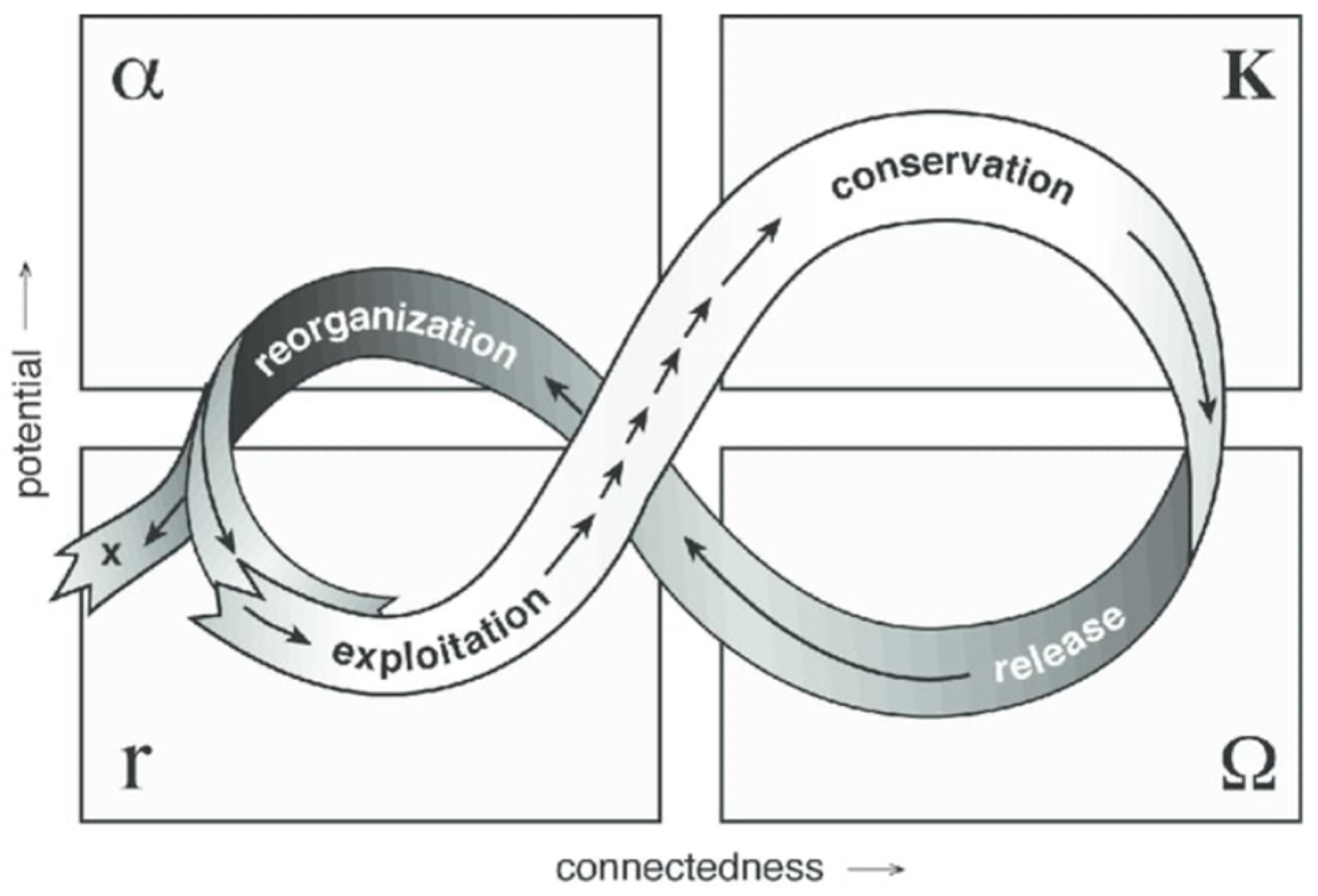
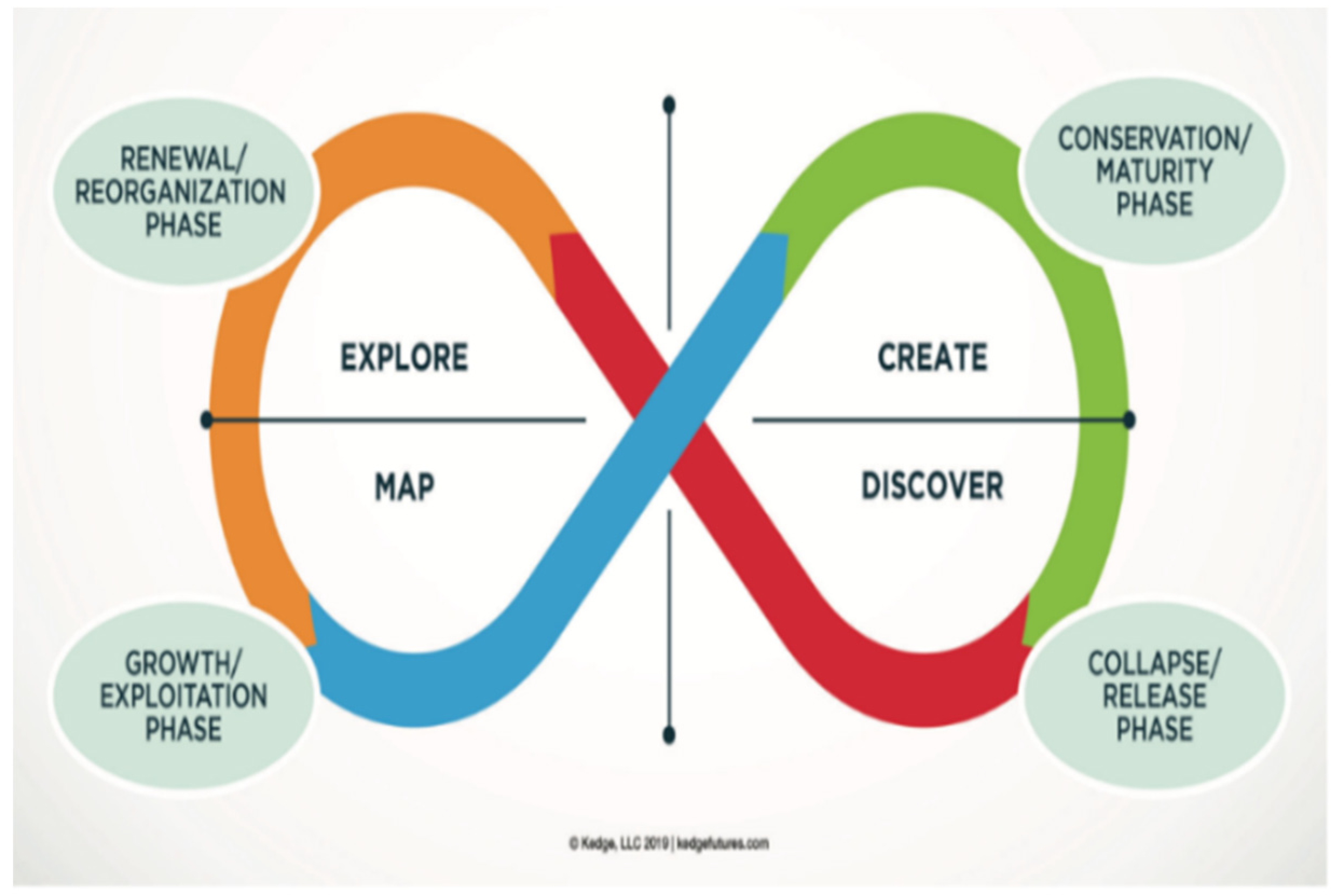
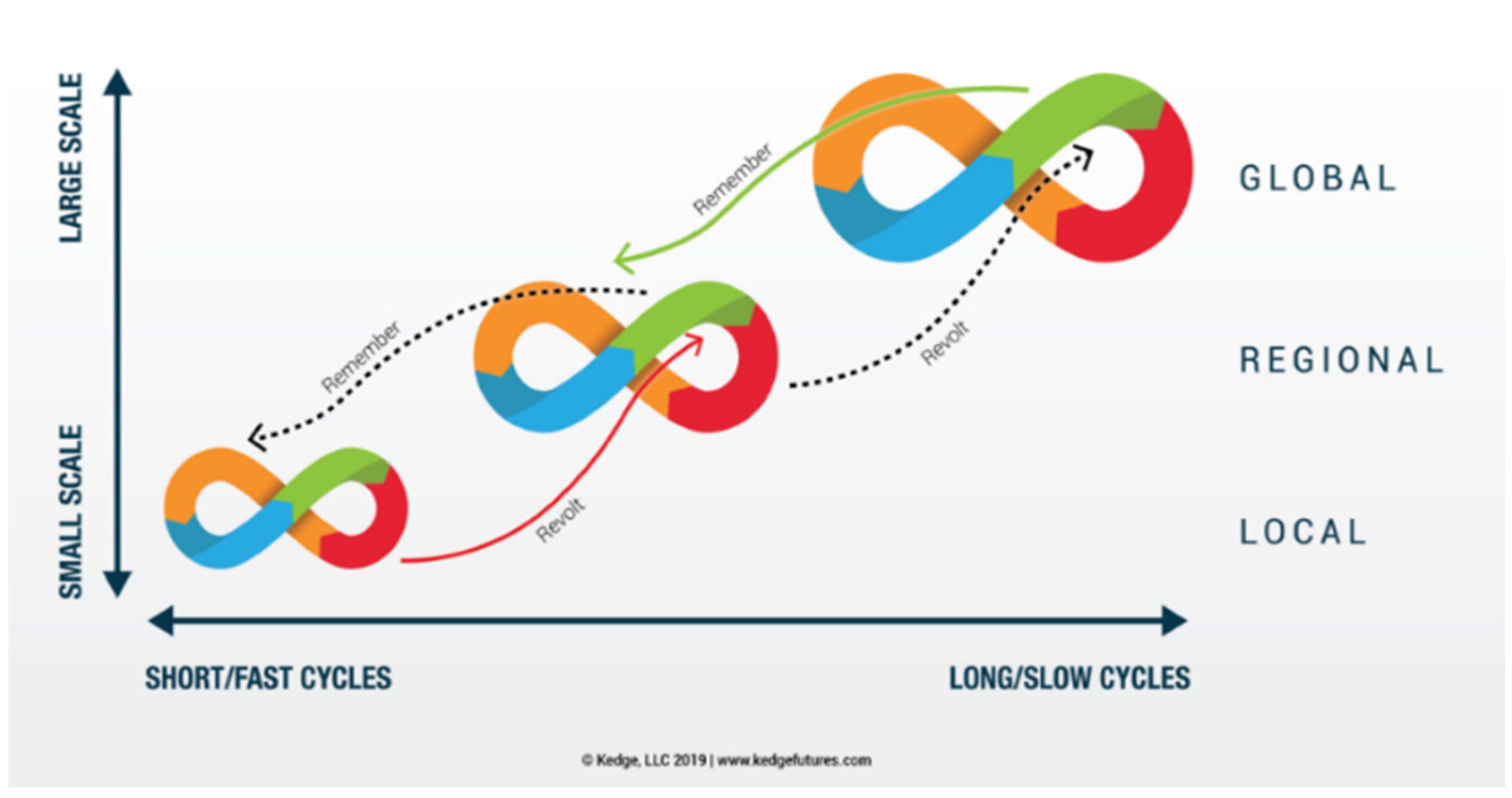
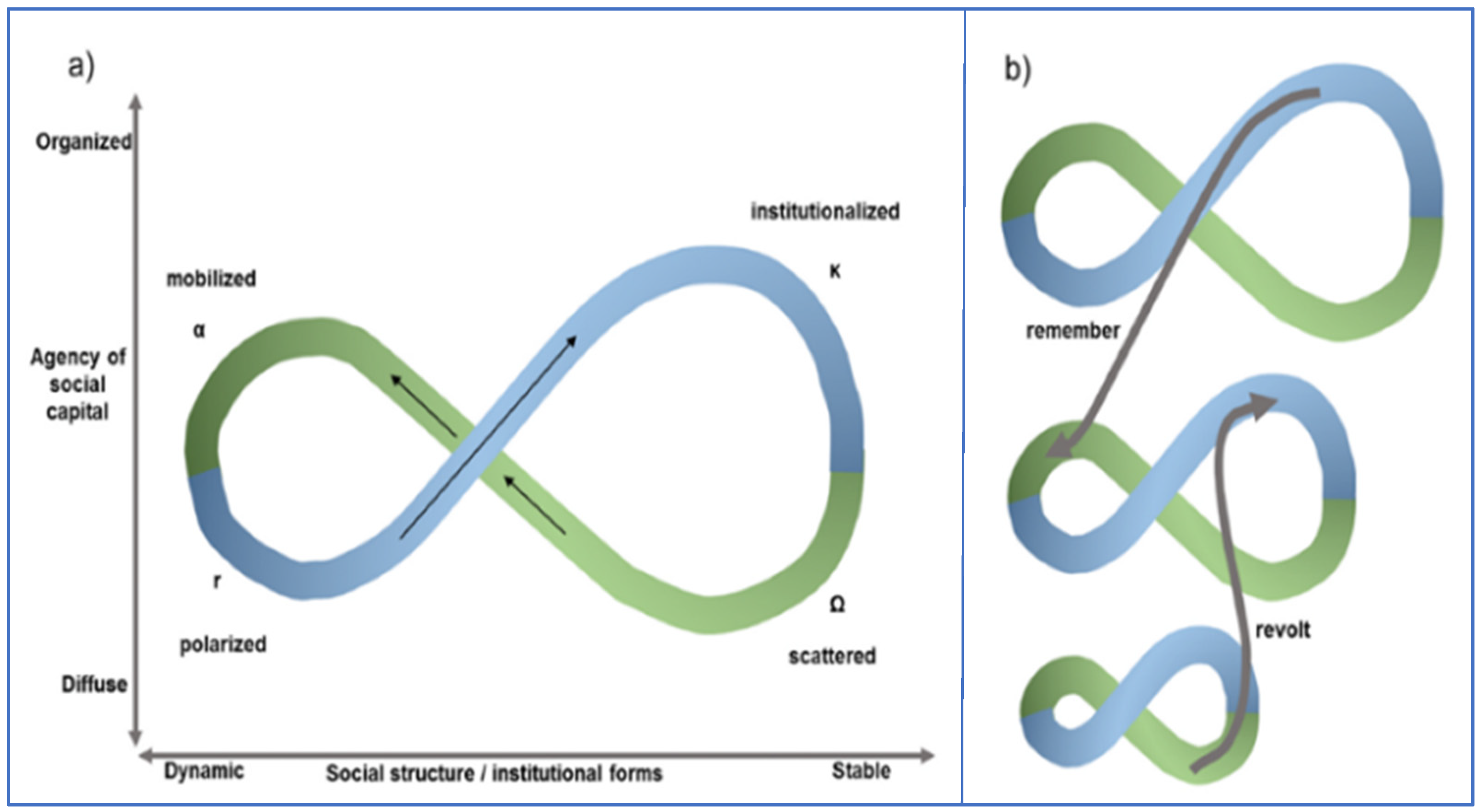
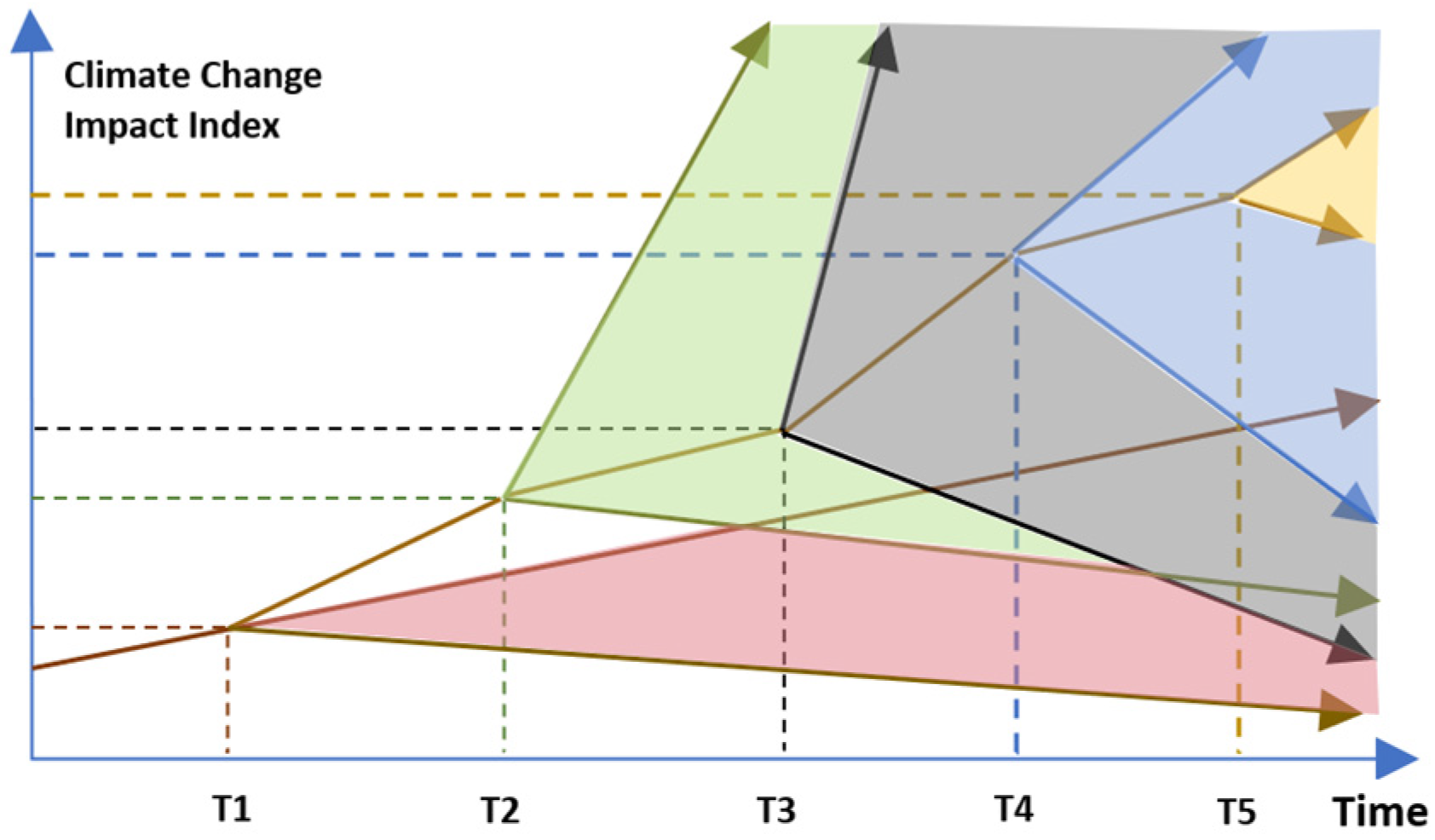
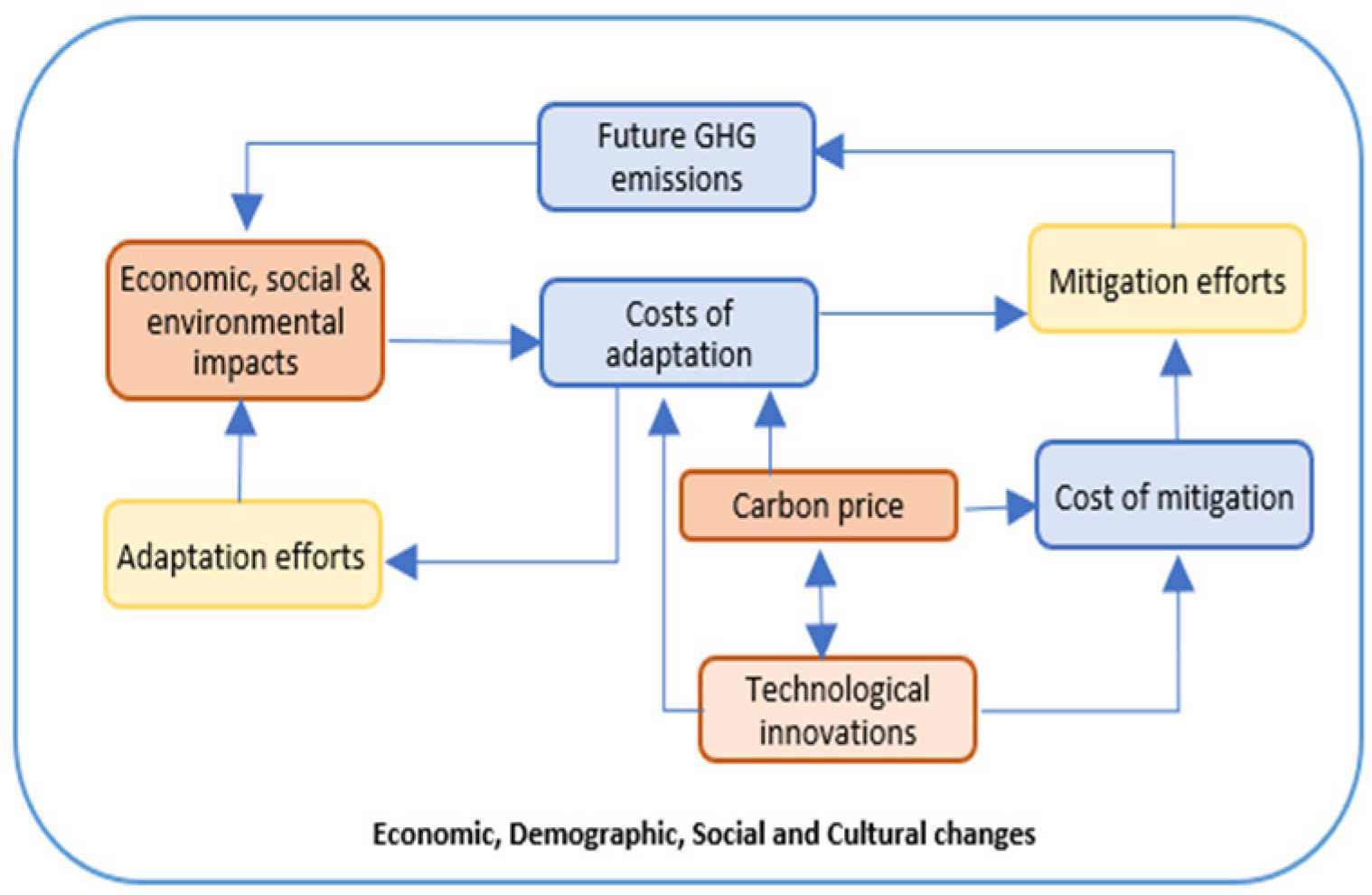
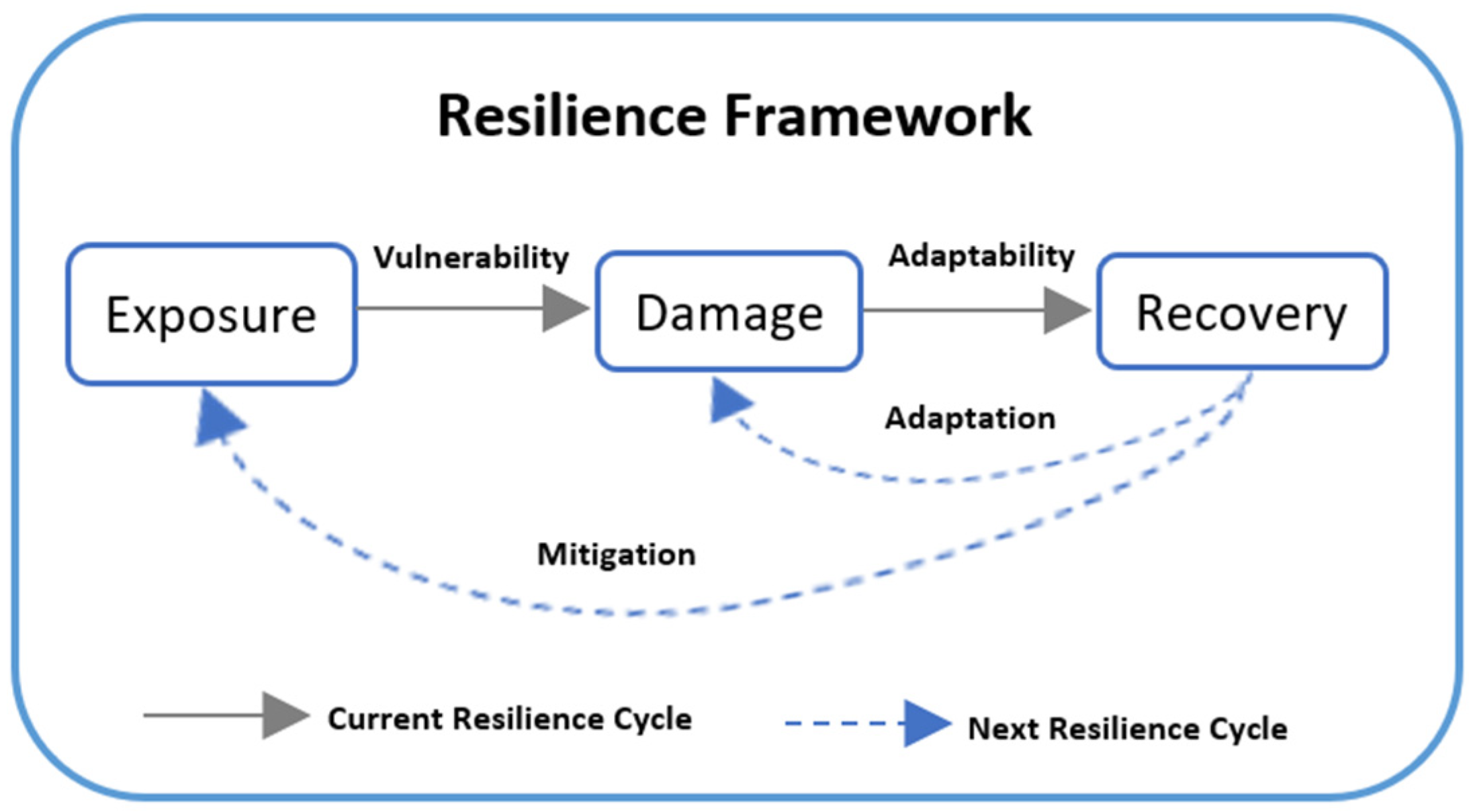
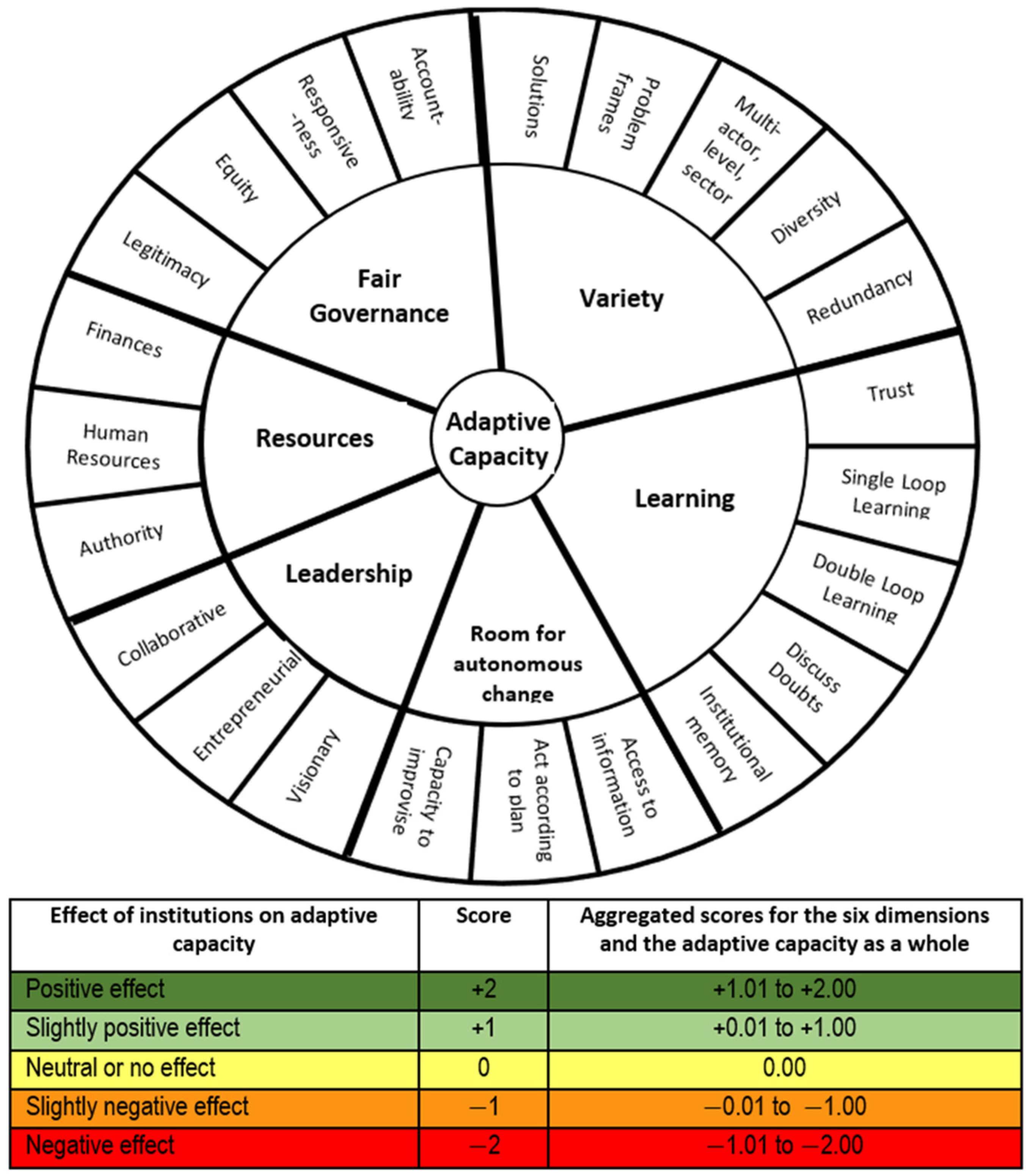
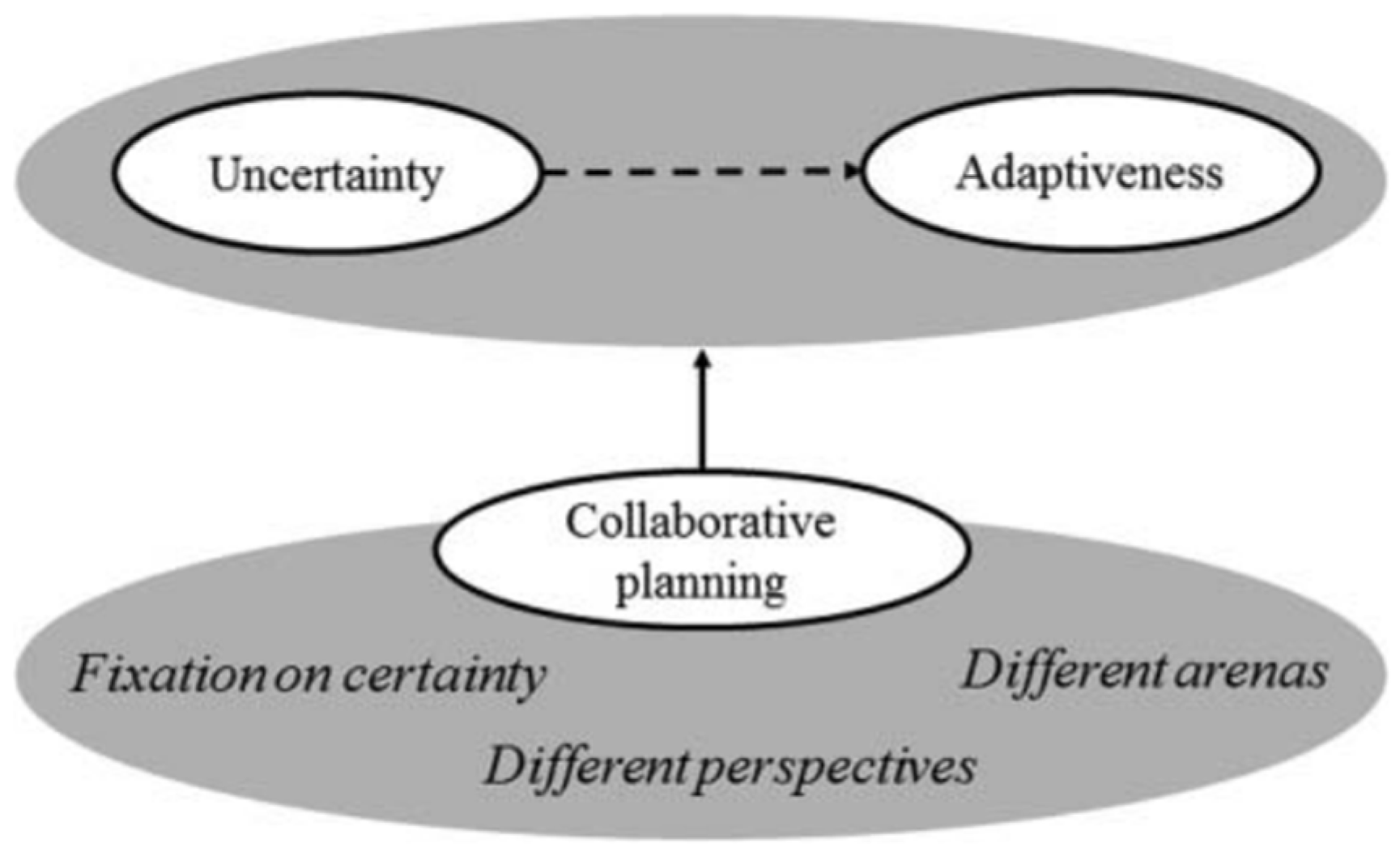
Disclaimer/Publisher’s Note: The statements, opinions and data contained in all publications are solely those of the individual author(s) and contributor(s) and not of MDPI and/or the editor(s). MDPI and/or the editor(s) disclaim responsibility for any injury to people or property resulting from any ideas, methods, instructions or products referred to in the content. |
© 2024 by the author. Licensee MDPI, Basel, Switzerland. This article is an open access article distributed under the terms and conditions of the Creative Commons Attribution (CC BY) license (https://creativecommons.org/licenses/by/4.0/).
Share and Cite
Rangwala, T. Literature Review: Adaptive Planning Practices. Water 2024, 16, 1657. https://doi.org/10.3390/w16121657
Rangwala T. Literature Review: Adaptive Planning Practices. Water. 2024; 16(12):1657. https://doi.org/10.3390/w16121657
Chicago/Turabian StyleRangwala, Tasneem. 2024. "Literature Review: Adaptive Planning Practices" Water 16, no. 12: 1657. https://doi.org/10.3390/w16121657
APA StyleRangwala, T. (2024). Literature Review: Adaptive Planning Practices. Water, 16(12), 1657. https://doi.org/10.3390/w16121657





